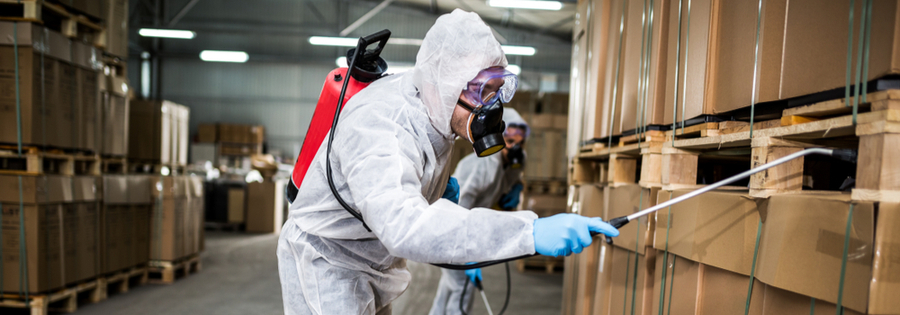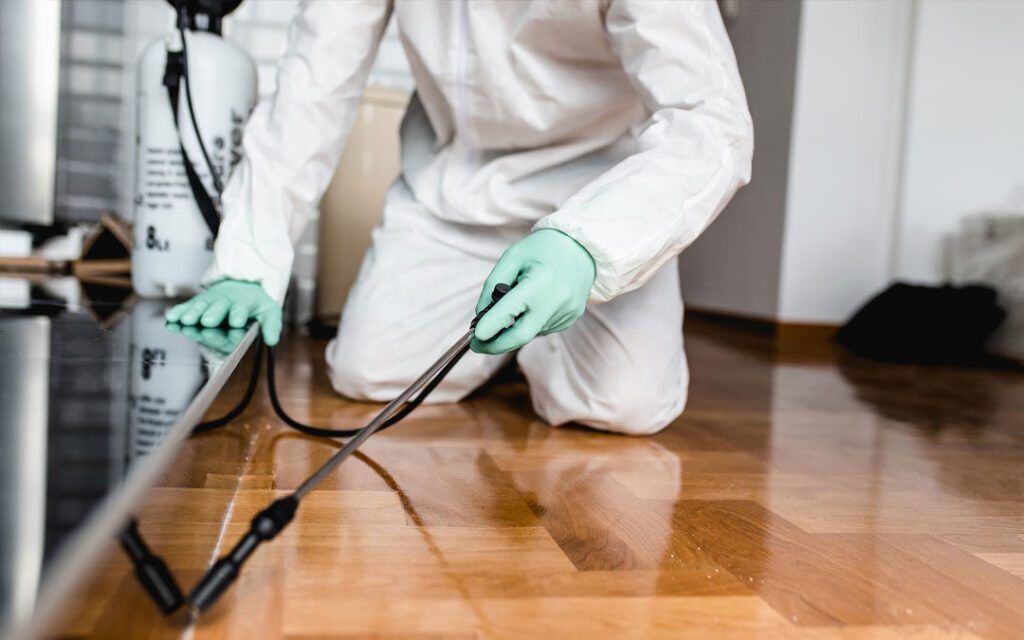Chicago Bug Infestation Removal: Quick and Effective Pest Extermination
Wiki Article
A Comprehensive Guide to the Various Sorts Of Bug Control Methods
With the myriad of pest control methods readily available, it can be frustrating to locate the most reliable option for a certain bug issue. In this extensive overview, we will certainly check out these different types of pest control methods, supplying understandings into their applications and advantages. By the end, you will certainly have a clearer understanding of which method may be the ideal fit for your insect control requirements.Chemical Insect Control Methods

One usual kind of chemical pest control is insecticides. Pesticides target details pests, such as insects, termites, or ants, and can be made use of both indoors and outdoors.
One more type of chemical insect control is rodenticides. These are chemical compounds created to manage populations of rodents, such as rats and mice.
Herbicide, also known as herbicides, are another kind of chemical pest control method. Herbicides are designed to uniquely eliminate undesirable plants, called weeds, without triggering harm to desirable plants. They are commonly made use of in farming, landscape design, and gardening to control the development of undesirable plants.
While chemical bug control techniques can be extremely effective in eliminating parasites, it is essential to utilize them carefully and comply with security guidelines. Overuse or misuse of chemical pesticides can have adverse influence on human health and wellness and the environment. For that reason, it is essential to employ these methods sensibly and take into consideration alternate insect control techniques whenever possible.
Organic Bug Control Techniques
Organic parasite control methods entail using living microorganisms or all-natural materials to handle and regulate pest populaces. Unlike chemical methods, which usually rely upon synthetic chemicals, organic control techniques make use of the all-natural enemies of pests to manage their populations. This strategy is taken into consideration more ecologically pleasant and lasting, as it lowers using hazardous chemicals and decreases the risk of chemical resistance.One commonly utilized biological bug control technique is the introduction of natural killers or bloodsuckers. Ladybugs are presented to manage aphids, while particular wasp species are launched to target caterpillars. These predators and bloodsuckers feed upon parasites, decreasing their numbers and stopping infestations.
One more biological control technique is the usage of pathogens. Specific bacteria, viruses, and fungis can be utilized to infect and kill specific parasites. For example, the microorganism Bacillus thuringiensis is typically made use of to regulate caterpillars, as it creates contaminants that are dangerous to these pests.
Organic control techniques can also include making use of scents or natural substances that interrupt the breeding patterns of insects. By interfering with their recreation, these methods assist to decrease pest populations over time.
While organic bug control techniques are usually reliable, they may call for longer durations to accomplish preferred results contrasted to chemical methods. In addition, cautious consideration has to be provided to the option and launch of natural enemies to avoid unintentional damage to valuable organisms or ecosystems.
Physical Bug Control Approaches
To properly manage and control pest populations, alternative insect control techniques understood as physical bug control approaches are used. An additional physical parasite control approach is the installment of fencings or wall surfaces to maintain bigger parasites, such as deer or rabbits, out of gardens or agricultural fields. Physical insect control techniques are an eco friendly alternative to chemical pesticides, as they do not depend on the usage of hazardous chemicals.All-natural Insect Control Approaches
All-natural pest control methods offer a sustainable and green method to handling and getting rid of pests. These techniques focus on the usage of all-natural substances and biological agents, lessening the need for chemical pesticides that can hurt the setting and human health. Among one of the most common natural bug control approaches is organic control. This entails presenting natural killers or bloodsuckers to prey on or parasitize the pests. Ladybugs are commonly presented to gardens to control aphid populations. One more natural approach is the usage of repellents derived from plants. Certain plants, such as marigolds, lavender, and pepper mint, emit aromas that fend off insects like mosquitoes, flies, and ants. Furthermore, social control techniques can be used to prevent and manage parasite invasions. This includes proper hygiene, routine maintenance, and promoting biodiversity in the garden. Revolving plants, getting rid of yard particles, and encouraging all-natural predators can assist protect against the buildup of bugs. By adopting these natural parasite control methods, individuals and areas can effectively handle insects while decreasing the negative influence on the setting and human health.Integrated Bug Monitoring (IPM)
Integrated Insect Management (IPM) is a comprehensive and organized strategy to pest control that incorporates numerous methods and methods to effectively take care of bugs while lessening making use of chemical pesticides. IPM aims to Flea control in Chicago maintain pest populaces listed below the economic injury level by utilizing a combination of social, biological, and chemical control methods.
Cultural control techniques involve changing the atmosphere to make it less desirable for bugs. This can include practices such as plant turning, correct cleanliness, and the use of immune plant ranges. By producing undesirable conditions for insects, social control techniques can substantially minimize pest populaces.

Chemical control approaches are utilized as a last hotel in IPM. They involve the targeted and cautious use chemicals to manage insect populaces. Unlike traditional insect control methods, IPM intends to lessen the usage of chemical pesticides by using alternative techniques.
Integrated Bug Administration (IPM) is an aggressive strategy that concentrates on lasting pest management rather than relying solely on responsive measures. By combining multiple control methods, IPM provides an extra lasting and eco-friendly technique to pest control.
Conclusion
In conclusion, this post has actually given a comprehensive overview of the various sorts of bug control techniques. It went over chemical, biological, physical, and natural parasite control approaches, in addition to the integrated pest management strategy. By comprehending these different methods, people can make educated decisions on which pest control approach is most appropriate for their particular needs and choices. Efficient pest control is important in maintaining a healthy and balanced and pest-free atmosphere.Report this wiki page